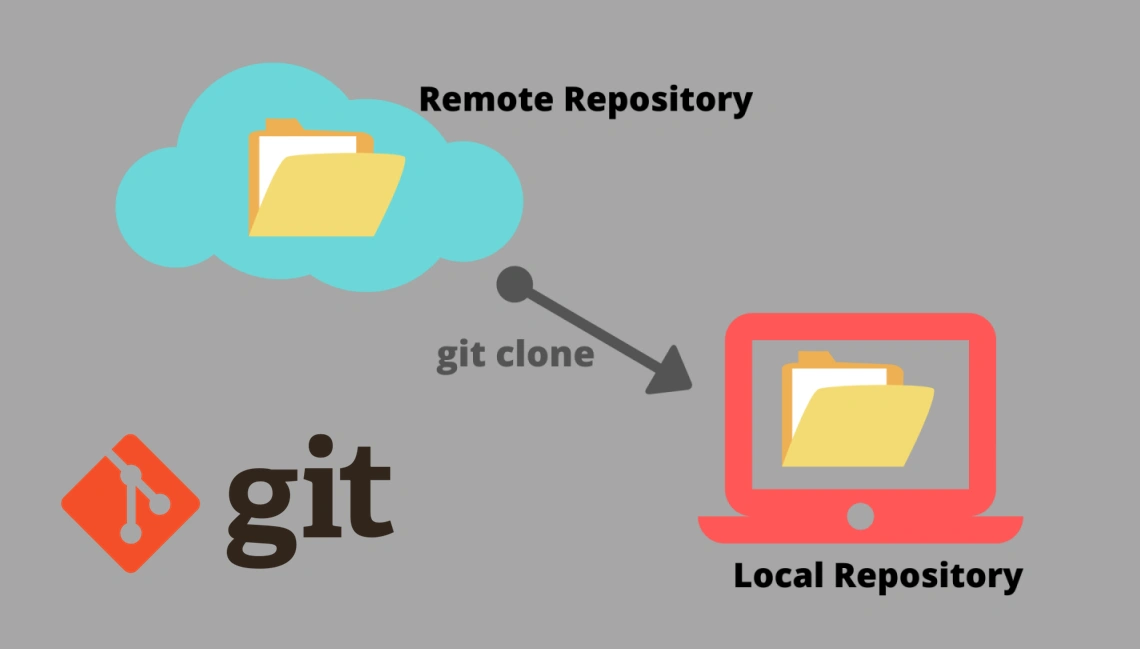In the modern programming world, working alone is rare. Projects, big or small, require collaboration, sharing, and synchronizing code among team members. This is where the Remote Repository shines, acting as the heart of every professional workflow.

But how do you connect and "communicate" effectively with this "heart"? This article will guide you from your very first steps to mastering all interactions with remote repositories using Git.
First Steps: Setting Up the Connection
There are two main scenarios to start connecting with a remote repository.
Scenario 1: Joining an Existing Project
This is the most common case when you join a new company or contribute to an open-source project. You need to "clone" the entire project from the remote to your computer.
Use the git clone command:
git clone <REPOSITORY_URL>
Example:
git clone https://github.com/facebook/react.git
This command does three magical things:
- Downloads the entire project folder.
- Creates a complete local repository with the full change history.
- Automatically sets up a default connection to the remote repository named
origin.
Scenario 2: Pushing a Local Project to Remote
You started a project on your computer and now want to upload it to GitHub to share or back it up.
Step 1: Create an empty repository on GitHub/GitLab.
Go to your chosen service and create a new repository. You will get a URL, e.g., https://github.com/your-username/your-project.git.
Step 2: Connect your local repository to the remote repository. In your project folder, run:
git remote add origin <REPOSITORY_URL>
git remote add: Command to add a new connection.origin: The alias for the remote repository. This is a common convention, but you can use another name if you wish.
Step 3: Check the connection. To make sure the connection is set up correctly, use:
git remote -v
This command lists all connected remotes and their URLs.
Daily Communication: The Art of Code Synchronization
Once connected, here are the commands you'll use daily to sync work between your computer and the "shared home".
⏫ git push: Upload Your "Achievements"
After completing a feature and committing changes to your local repository, git push helps you upload those changes to the remote repository to share with everyone.
Syntax: git push <remote_name> <branch_name>
Example:
git push origin main
This means: "Push the latest commits from my local main branch to the main branch on the remote named origin."
⏬ git fetch vs. git pull: Update Changes from Remote
This is often confusing for beginners. Both commands get new code from the remote, but they work differently.
-
git fetch: Check for Updates 🕵️♂️- Downloads the latest changes from the remote repository but does NOT automatically merge them into your current working branch.
- Only updates the "remote branches" in your local repo (e.g.,
origin/main). You can review these changes (git log origin/main) before merging. - When to use? When you want to see what others have done on the remote without affecting your current work.
-
git pull: Update and Merge Immediately 🚀git pullis actually a combination ofgit fetchfollowed bygit merge.- It downloads new changes and immediately tries to merge them into your current working branch.
- When to use? When you're ready to update your branch with the latest changes from the remote.
Metaphor summary:
git fetchis like checking your mailbox—you see new mail but don't open it yet.git pullis like checking your mailbox and opening the mail right away, mixing it with the papers already on your desk.
A safe workflow is:
# 1. Fetch the latest changes without merging
git fetch origin
# 2. Compare your local branch with the updated remote branch
git log main..origin/main
# 3. If everything looks good, merge the changes
git merge origin/main
Managing Remotes
Git lets you work with multiple remote repositories at once. Here are some useful management commands:
-
List remotes:
git remote -v -
Rename a remote:
git remote rename <old_name> <new_name> -
Remove a remote:
git remote remove <remote_name>
"Golden Tips" for a Professional Workflow
- Always
pull(orfetchandmerge) beforepush: This golden rule minimizes merge conflicts. Always make sure your local version is up to date before pushing your code. - Use branches effectively: Never work directly on the
main(ormaster) branch. Create a new branch for each feature or bug fix, then merge it into the main branch. - Write clear commit messages: Commit messages are how you communicate with your future teammates (and yourself). Write them clearly and concisely.
Conclusion: Remote Repositories Are Essential for Teamwork
Connecting and interacting with remote repositories isn't magic—it's a set of logical processes and commands. By understanding clone, push, pull, and fetch, you're not just using a tool, but joining a modern, efficient collaborative workflow.
Practice regularly, don't be afraid to experiment, and you'll soon find mastering Git and remote repositories is one of the most valuable skills in your programming career.
![[Git Basics] How to Use Git log: Mastering Commit History](/images/blog/how-to-use-git-log-thumbnail.webp)
![[Git Basics] How to Effectively Resolve Merge Conflicts in Git](/images/blog/resolve-merge-conflicts-in-git-thumbnail.webp)
![[Git Basics] How to Install and Configure Git Initially: What You Need to Know](/images/blog/how-to-install-and-configure-git-initially-thumbnail.webp)
![[Git Basics] What is the .gitignore File? How to Use It Effectively for Every Project](/images/blog/gitignore-file-thumbnail.webp)